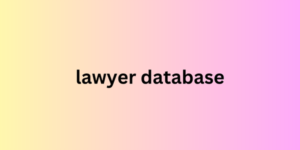Table of Contents
What is Image Optimization?
1. Adjust the image size appropriately.
2. Name your image files appropriately.
3. Use Alt tags to help.
4. Create images that are mobile-friendly.
5. Don't forget to set Image title.
6. Add a caption to your photo.
7. Use unique images.
8. Check all components of the image.
9. Add Image Structured Data
10. Use Site Maps
Make your photos look their best
What is Image Optimization?
Image optimization is about creating and delivering quality images in the right file size and format to increase user engagement. It's also about labeling your images with important metadata so that search engine crawlers can read and understand the context of the image.
According to the HTTP Archive, in 2018 images accounted for 21% of the average weight of a web page. This share is expected to increase based on the use of images in recent years. They also estimate that images will be the heaviest element on a web page, so image size and complexity will have a significant impact on a site's performance.
But if you try to reduce the size of your images without sacrificing quality, you will improve your page load time and overall user experience. Doing this will have a positive effect on search engine rankings. Now, your customer engagement and conversions will increase , and you will be able to retain your customers.
Giveaway Tip: Optimizing your images will give you more storage space on your server and make backups faster.
In this article, we will whisper 10 ways to enhance your images for you to try. Let's see...
1. Adjust the image size appropriately.
Image size and file size are not the same. Image size is the dimensions of the image, such as width and length, such as 1024 x 680 pixels. File size is the storage space, such as 350 kb.
Images with heavy file sizes and excessively large image sizes will lawyer database slow down page loading, even if they are aesthetically pleasing or print well. It's best to use a smaller scale and resize them to fit your website.
Use files appropriately
PNG, JPEG, and GIF files all have their own advantages, but if you want a recommendation, I would recommend JPEG for images with multiple colors and PNG for normal images.
Choose the appropriate compression rate
Compressed images directly affect the file size and image dimensions, making the image smaller and reducing its quality.

After experimenting to see which file types and compression sizes work best for your image, many image editors, such as Adobe Photoshop, offer the option to save an image for the web, which automatically reduces the file size when you adjust the image quality.
But if you’ve never used Photoshop, these tools can work just as well:
Image enhancement tools
· Affinity Photo
· FileOptimizer
· Gimp
· ImageOptim (Mac only)
· JPEG Mini
· Kraken (bulk compression)
· Photopea
· Pixlr (JPEG optimization)
· OptiPNG
· Trimage
WordPress plugin for image optimization
· EWWW Image Optimizer
· ImageRecycle
· Optimus Image Optimizer
· ShortPixel
· TinyPNG
· WP Smush
· Yoast SEO
Test speed
After optimizing your images, how do you know if your page loads fast? It's easy to use these tools to test the speed of your website:
· GTmetrix
· Google PageSpeed Insights
· Pingdom
· WebPageTest
· WebWait
Tip: If you update your website frequently, it's a good idea to always check the page load time.
2. Name your image files appropriately.
Relevant image file names should include the key keywords, preferably at the very beginning, or one or two words separated by a hyphen (-). Never use an underscore (_), as search engines do not recognize these characters and will not see them as words.
Image file names should be accessible to both search engines and readers. For example, if the original file name for an image of a woman in a hair salon is salon1234.jpg, try changing it to something more understandable, such as Woman getting a haircut in a hair salon.jpg.
3. Use Alt tags to help.
Visitors may understand the image, but search engines like Spiders need clues to understand it. Without alternative text, search engines have no way of knowing what the image is about.
Good alt tags provide context for bots to understand and can also help users with visual impairments. They are also useful when images are loading incorrectly, as search engines can still read alt tags and use them to help with ranking.
Tip: Product-related words can be included in alt tags to increase visibility, but avoid keyword stuffing.
4. Create images that are mobile-friendly.
Google's algorithm indexes mobile-first, meaning that crawlers will first target the mobile version of a page, so it's important to make your images mobile friendly. The short answer is to make sure your images and layout are mobile-friendly.
Some templates and website builders will automatically resize images, but you can still specify the size of the image based on the width of the device. Try adding custom CSS code to your website.
5. Don't forget to set Image title.
WordPress usually generates a title for an image from the file name, but if you don’t use WordPress or the title doesn’t describe the image well enough, you can change it yourself. You can also add keywords to the image file name. Ideally, the title should match the keywords on your website.
Image titles are the least important part of SEO, but they can help a lot in providing more context than alt tags that may only contain keywords or may not be descriptive enough. Image titles can also help with user engagement. Try using a call to action like “Buy now” or “Download today”.
